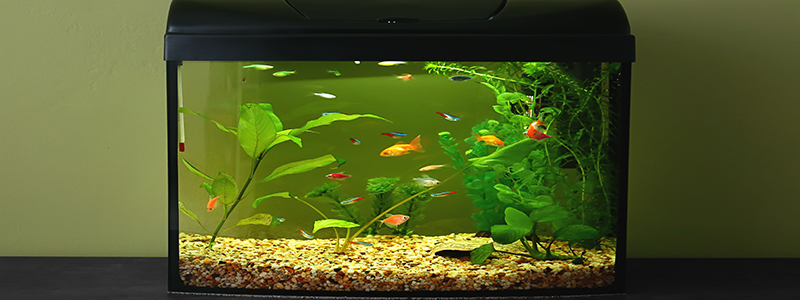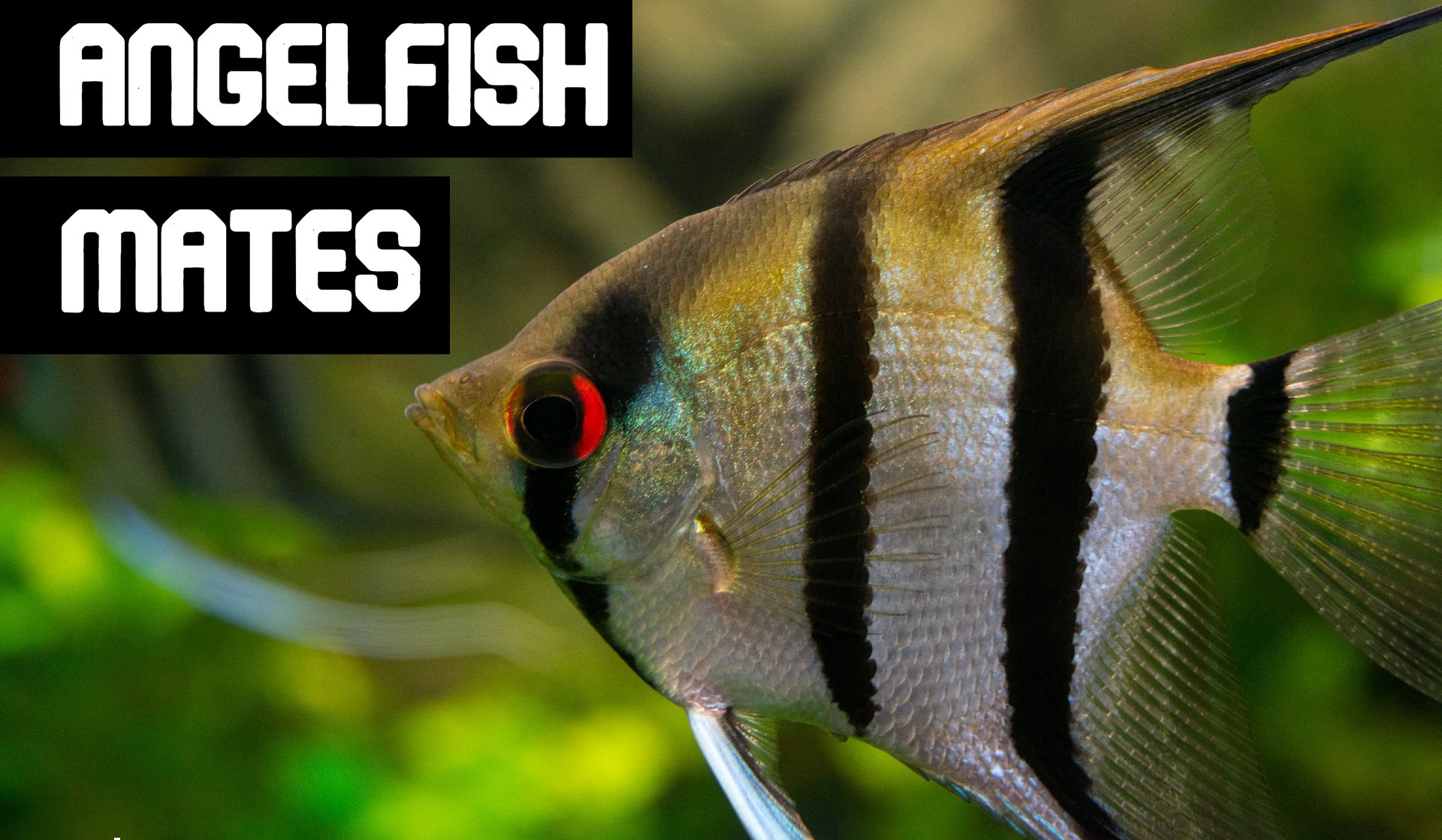If you’re new to fish keeping or just thinking about getting a fish tank, a larger tank can feel intimidating. You may think starting small is the way to go, but is that really the best option?
What happens if a fish tank is too small? For starters, it’s not good for your fish’s growth or the tank’s water quality. You might also see your fish acting strangely due to stress. There are a lot of things that can go wrong when your tank is too small!
A few of them include:
- Stressing out your fish
- Stunting your fish’s growth
- Poor water quality
- Inconsistent water temperature
I take a look at each of these in more detail below and also talk about what you can do to correct these issues, and how to choose the right-sized tank for your fish so you don’t have to go through the trauma of having a tank that’s too small.
Dangers of Having a Tank That’s Too Small
While it might not seem like that big a deal, choosing a tank that’s too small for your fish can cause a lot of damage. I talk about a few of the things that can go wrong below.
It Stresses Your Fish
When fish are crowded into a too-small tank, they can get stressed out. Stressed fish may become aggressive that would normally not be, and other fish may lose color or get sick. Some fish may stop eating.
We all want our fish to be healthy and happy, and overcrowding them doesn’t let them be either one.
Your Fish Could Be Stunted
Keeping fish in a tank that’s too small for them keeps them from growing to their full size.
It can also cause some deformities, like bent tails, etc., because they can’t grow properly in a too-small tank.
The Water Quality Won’t Be Good
If you don’t have a large enough tank, waste will build up quickly–maybe even more quickly than your filter and the good bacteria in your tank can keep up with it.
This causes your water quality to take a nose-dive, which stresses the fish and can make them sick or even die.
Smaller tanks require more frequent water changes than larger tanks do anyway, and adding too many fish to the mix makes it even more difficult to stay on top of water changes and ensure the water parameters are safe for your fish.
Water Temperature Fluctuations
Believe it or not, water temperature fluctuates a lot more in a small tank than it does in a larger one, and it can be tough to keep the temperature at the right level for your fish on a consistent basis.
This is because small tanks are more affected by things like sitting near a window, being near a heat vent/air conditioner, or even just absorbing heat from the light in the tank itself.
Fish can go into temperature shock if they get too cold, which can kill the fish, and being too warm is harmful, too.
What You Can Do if Your Tank Is Too Small
There are several options here, but not all of them are going to feel very good.
First, you might have to work on getting those fish healthy if you’ve got illness going around because of stress or bad water quality. This could involve medicating the entire tank or creating a hospital tank where you separate out any sick fish and treat them away from the rest of your fish.
Next, you might need to give away some (or all) of your fish, depending on how big your tank actually is. Most of the time, your local fish store will be willing to take healthy fish, even if you didn’t buy the fish from them. I know it doesn’t feel very good to give away fish you really like, but it might be necessary for their own health and safety.
Just don’t expect the fish store to pay you for taking on the extra fish, especially if you’re past the refund period. They will have expenses for these fish like extra food and creating tank space for them, and they may or may not be able to sell the fish once they’ve been brought in.
Finally, if you’d like to keep all of your fish, then you’ll either need to purchase a second tank and split the fish between the two tanks, or buy a larger tank and transfer all the fish to the larger tank.
Be sure, if you go for two tanks, that each tank is large enough for the size and type of fish you have. I explain how to pick the right size tank below.
How To Choose a Tank That’s Just the Right Size
So how do you avoid the mistake of getting a tank that’s too small in the first place?
You’ll need to think about several factors, including:
- How many fish do you want to have
- How big each fish will get
- Whether the fish needs to be in a group or not
- Whether or not your fish are territorial
- How much swimming space do the fish need
- How heavily decorated/planted the tank will be
Number of Fish
If all you want is a betta, then your choice is simple–at minimum, your fish would need 5 gallons. However, if you want anything else, it gets a little more complex. If you plan on having more than one fish in the tank, then generally, it’s better to start with at least 10 gallons, though if you plan to get schooling fish, you’ll probably need an even larger tank.
Schooling Fish
Schooling or shoaling fish do best when they’re around other fish of the same species. These fish are normally only comfortable in groups of at least 6, and some would rather be in groups of 10 or more, depending on the species.
That means you’ll quickly run out of space in any smaller tank, especially when you take into account the adult size of each fish.

Size of Your Fish
When thinking about fish size, you want to go with the adult size of the fish, which may or may not be the size the fish was when you bought it.
Generally, for slim-bodied fish (think neon tetras, small danios, guppies, etc.), the rule of thumb is about 1 gallon of water per inch of fish. So a 2-inch danio would need 2 gallons of water. Multiply that by at least 6, since these are schooling/shoaling fish, and you get 12 gallons minimum tank size.
For larger-bodied fish (some large tetras, angelfish, goldfish, etc.), the general rule of thumb is about 2 gallons of water per inch of fish.
Territorial/Shy Fish
If you want to stock territorial fish in your aquarium (or semi-aggressive to aggressive fish), you’ll need a tank large enough to provide plenty of separate territories for your fish to “own.”
This way, you’ll minimize aggression toward each other and innocent bystanders in your tank.
The same goes for shy fish, which will need lots of hiding places in the tank to feel safe, and it’s hard to provide enough hiding places if the tank is too small.
Swimming Room
Some fish just love to float in one spot all day, and only seem to move when it’s dinner time!
Other fish are active swimmers and need room to stretch those little muscles. These fish will need a larger tank than your couch-potato (tank potato?) varieties, so they can get all the exercise they need.
Your local fish store should be able to tell you which fish need the extra swim space, and how heavily you should decorate their tank, which I look at below.
Decoration/Plant Density
This affects how much water is actually in the tank and how much room fish have to swim around.
If you have lots of plants and/or decorations, that means you have less water in the tank than it can actually hold when it’s empty. So, you need to stock fewer fish in the tank if it’s heavily planted or decorated than you would if it was lightly planted/decorated.
Those active swimmers who might be fine in a 36-gallon tank that’s lightly planted may need a much bigger tank if most of their swimming space in the smaller tank is going to be taken up with plants and/or decorations.
In Summary
Picking out the size of tank you want might not seem all that crucial, but getting a tank that’s too small can have a pretty big negative impact on your fish.
They can be stressed, which can lead to aggression, illness, or even death. Your fish will also be swimming around in unhealthy water, and a small tank can even stunt their growth.
You can always return a few of your fish, buy a larger tank, or even get a second tank and split the fish between the two tanks.
By keeping a few of the following factors in mind, you can avoid this issue from the start:
- Number of fish you want
- How big they get
- If they need a group to feel safe
- If they’re territorial/shy
- How much room do they need to swim
- How many decorations/plants are in the tank




